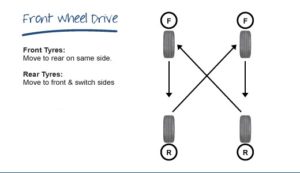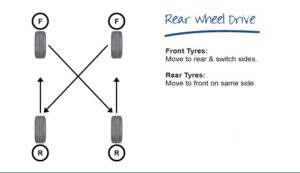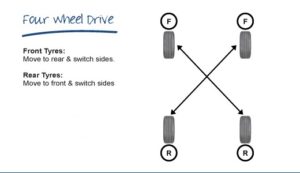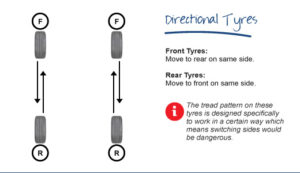The first thing you should know is that a car battery’s lifespan is fixed and there’s nothing you can do to extend it beyond that. But, there are things drivers often do that cause the battery to die early. Learn how to care for your battery and be rewarded with a long battery life.
Shorts distance trips prevent your car’s battery from a full charge cycle. Over the long run, this will reduce the charge capacity of the battery and its lifespan. Instead, go for a long distance drive once a week during the weekend to give the battery a full charge it deserves.
Battery terminals corrode over time, but keeping them clean from buildup is a great way to extend the life of your car battery. Scrub the terminals with a toothbrush dipped in a baking soda and water mixture. Then, using a spray bottle with cold water, rinse the mixture off and follow up with a thorough drying with a clean cloth.
Turn off functions like the radio or air conditioner when your engine isn’t running to put less wear and tear on your battery power. Extended periods of idling also can wear a battery down. And not to forget, don’t charge your smartphone before starting your car’s engine.
A battery that’s not securely fastened could end up vibrating, potentially resulting in internal damage and short circuits. Have your battery terminal checked regularly, especially if you frequently drive on bumpy roads.
If your alternator is bad it will results in ineffective recharging of your battery and dramatically shorten your battery’s lifespan.
Source: Carput
Car tyre pressure is measured by calculating the amount of air that has been pumped into the inner lining of your tyre in pounds per square inch (PSI) or BAR pressure.
The manufacturer of your vehicle will specify the suitable pressure for your tyres, and it is your responsibility as the driver to make sure that the pressure is checked and corrected on a regular basis. We recommend doing this every two weeks to ensure optimum tyre pressure.

Under inflated tyres
Tyres can quickly become underinflated if you don’t check them regularly. Under inflated tyres will have uneven contact with the road and will exhibit excessive wear on the inside and outside edges of the tread if they are left underinflated for some time. Not only does low tyre pressure wear your tyres out more quickly but you may also experience increased rolling resistance with the road which means reduced fuel efficiency and increased CO2 emissions.
Over inflated tyres
Putting too much air in your tyres can be just as damaging and costly. Over inflated tyres will have a smaller contact patch – the part of the tyre that makes contact with the road – which can lead to a loss of traction and poorer braking distances. Overly high tyre pressure will also cause heavy and uneven wear across the central part of the tyre leading to shorter tyre lifespans than if it was correctly inflated.
Correct tyre pressures
It’s not always apparent that air is being lost from your tyres, but it generally escapes at the rate of up to two PSI of air every month. More air is usually lost during warm weather, so more regular checks are needed when temperatures rise.
You can find the recommended tyre pressure for your vehicle in your vehicle handbook or printed either in the sill of the driver’s door or on the inside of the fuel tank flap. Your vehicle manufacturer may suggest different tyre pressures for your front and rear tyres so make sure you aware of these guidelines.
Sources:KwikFit
Rotating your tyres periodically can help to prevent uneven wear and prolong the lifespan of your tyres.
When should you rotate your tyres? Generally speaking, it is recommended that you rotate the tyres on your vehicle once every six months, or 6,000 miles – whichever comes first.
To do so, each tyres need to be removed and refitted at a different position. This helps to ensure that each tyre wears evenly and lasts longer.
For each driving method, there is a correct way to rotate your tyres. You want to ensure that you rotate the tyres to the correct position for your vehicle.

The two front tyres stay on the same of the car and are transferred to the rear. However, the rear tyres move forward and switch sides.

The two rear tyres stay on the same side of the car and are transferred to the front. However, the front tyres move backwards and switch sides.

In this instance both sets of tyres swap sides and position. So the two front tyres move back and switch. At the same time the two rear tyres move forward and switch.
The above rules should not be followed if your tyres are ‘directional tyres’. The tread pattern on this variety tyre is designed specifically to work in a certain way in relation to its position on the vehicle – switching sides would be dangerous.

The tyres change position, but do not switch. The two front tyres move back and the two rear tyres move forward – they stay on the same side of the car as before.
Source: blackcircle.com